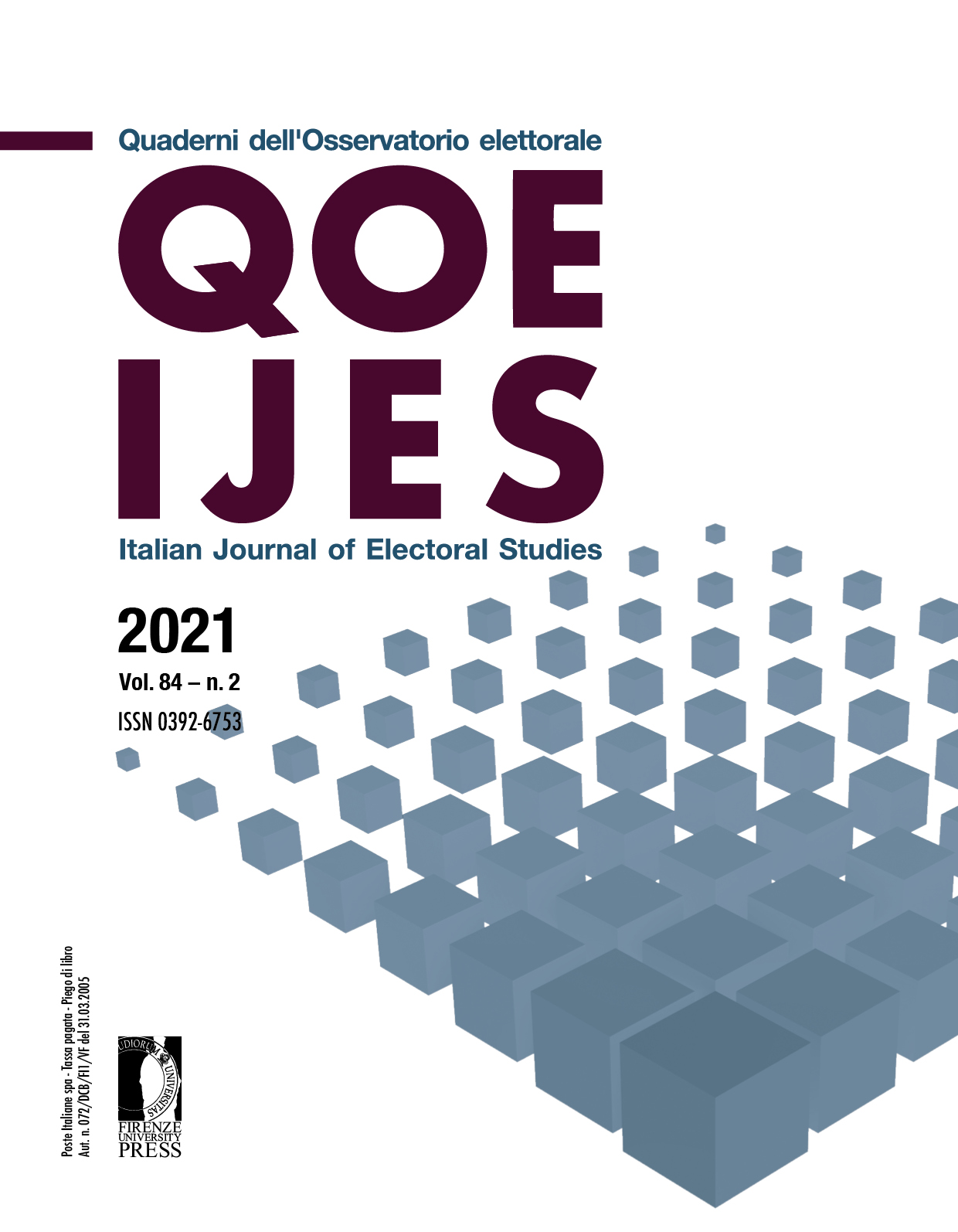Published 2021-11-12
Keywords
- Italian referenda,
- negative voting,
- personalization of politics,
- protest voting
How to Cite
Abstract
The classic heuristics of voting behaviour have been eroded overtime especially in well-established democracies. Ideology, party identification, and social class have been gradually replaced by short-period factors. In particular, the personalization has represented an innovative variable that significantly contributes to explain voting behaviour. Cross-pressures between party identification, candidate assessments and issue preferences paved the way to the diffusion of protest voting, both against the élite and the system. In this respect, Italy represents a very interesting case from both a theoretical and an empirical point view considering the presence of protest parties and the important diffusion of anti-system movements which surfed the protest to consolidate their positions. The editors conceived this special issue aiming at analysing and measuring the impact of protest/negative voting in Italy between 2016 and 2020, a period in which protest parties and voters’ discontent have significantly increased. Data presented by the different papers confirm, albeit under different perspectives, the relevance of this peculiar form of political behaviour.


